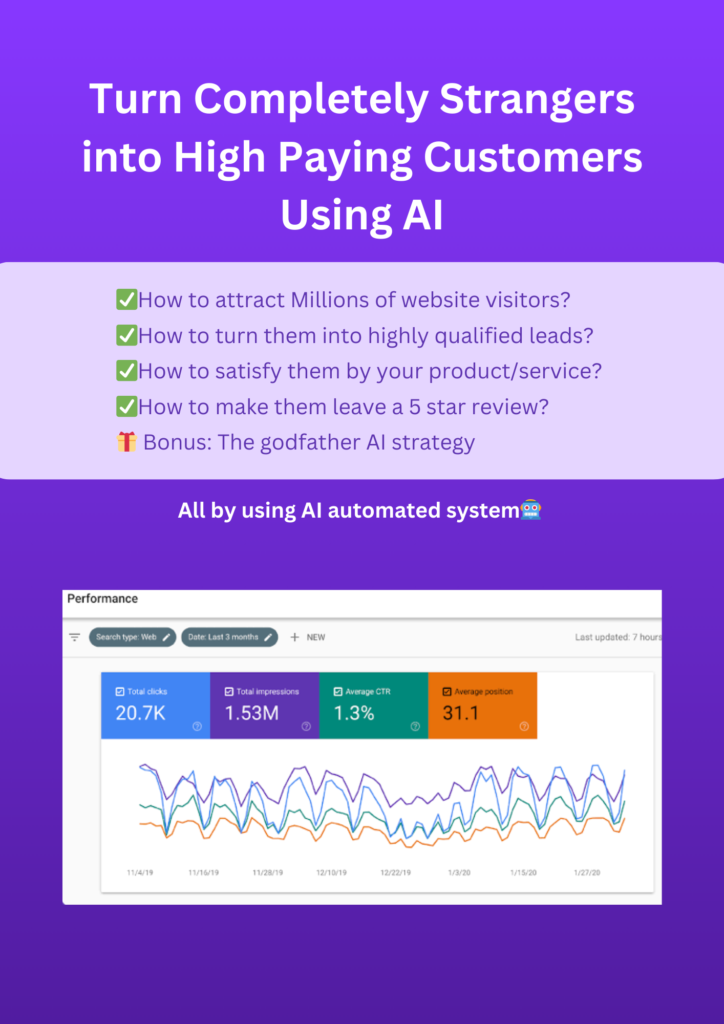Introduction
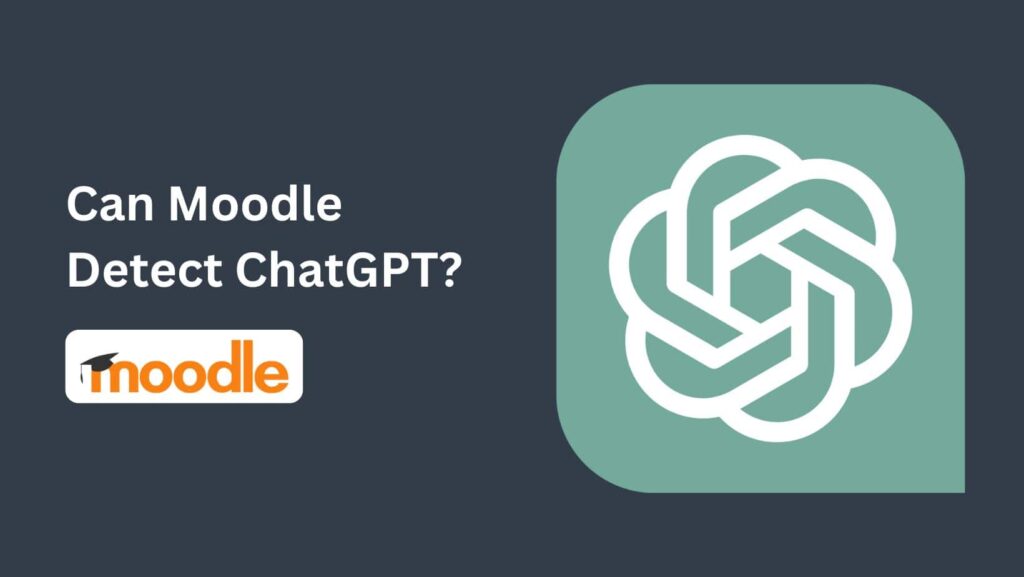
Is AI Sneaking Into Your Classroom? Can Moodle Detect ChatGPT-Generated Content?
Have you ever suspected a student might be using some secret weapon to ace their online assignments?
With the rise of powerful AI writing tools like ChatGPT, that concern is more relevant than ever.
These tools can churn out essays and other content in seconds, raising a big question for educators.
Can Moodle, a popular platform for online learning, actually detect content written by ChatGPT?
What Is Moodle?
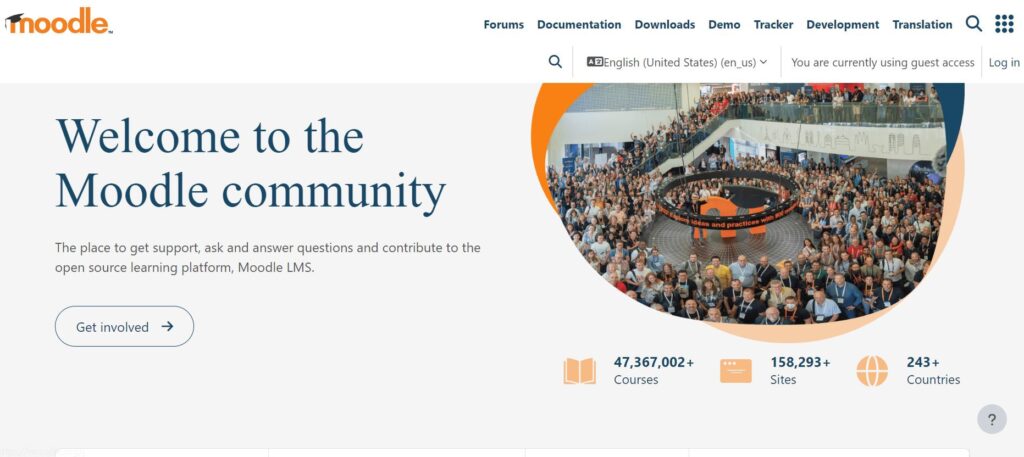
Moodle is a giant online toolbox for teachers.
Instead of a physical classroom with desks and whiteboards, Moodle provides instructors with digital tools to build their courses.
Teachers can upload all sorts of materials, like readings, videos, and quizzes.
They can also set assignments, discussions, and track student progress.
Think of it like a website specifically designed for teaching and learning.
Students can access course materials, submit assignments, and even interact with classmates through discussion forums – all from the comfort of their own computer or phone.
So, Moodle keeps the learning going even when everyone isn’t in the same physical space.
But with this online environment comes the question: how can teachers be sure students are doing their own work and not turning to AI for a helping hand?
Can Moodle Detect AI?
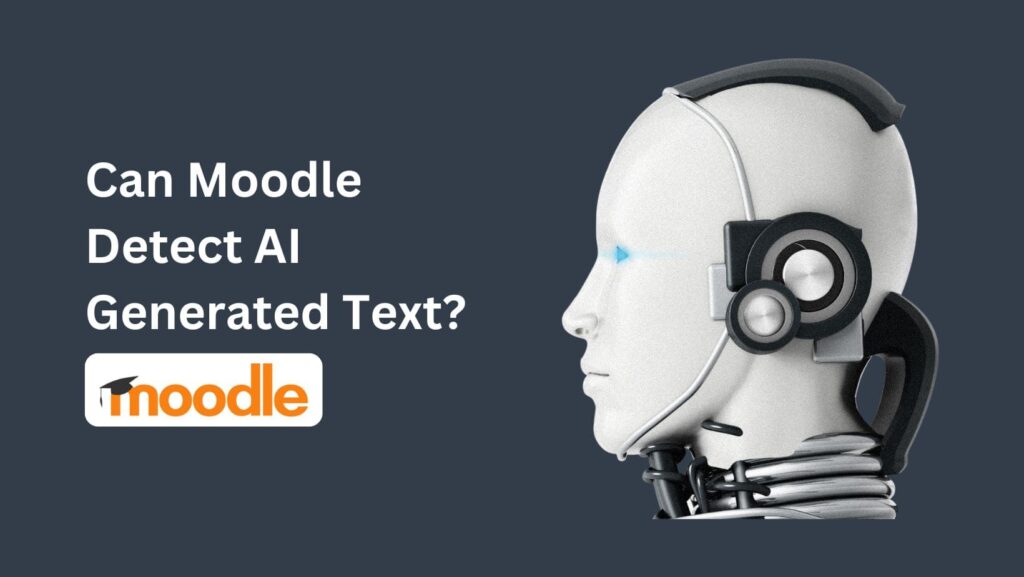
The truth is, Moodle on its own doesn’t have a built-in X-ray vision for AI-generated text.
Imagine it like a well-equipped classroom – it has desks, whiteboards, and everything a teacher needs, but it doesn’t come with a special AI detector.
Here’s the good news: Moodle can be a superhero in disguise!
It can work with external plugins, like add-ons for your phone, to gain new skills.
One powerful plugin is called Originality.ai.
Think of Originality.ai as a plagiarism-fighting champion.
It can scan submitted work and compare it against a massive database of online sources, including text written by AI tools.
This way, even if a student tries to sneak in AI-generated content, Originality.ai can potentially flag it as suspicious.
So, to recap:
- Moodle by itself can’t detect AI-written content.
- Moodle can be integrated with plugins like Originality.ai.
- AI can scan for plagiarism, including content written by AI tools.
By teaming up with these plugins, Moodle becomes a more powerful tool for maintaining academic integrity in online classrooms.
Can Moodle Detect ChatGPT?
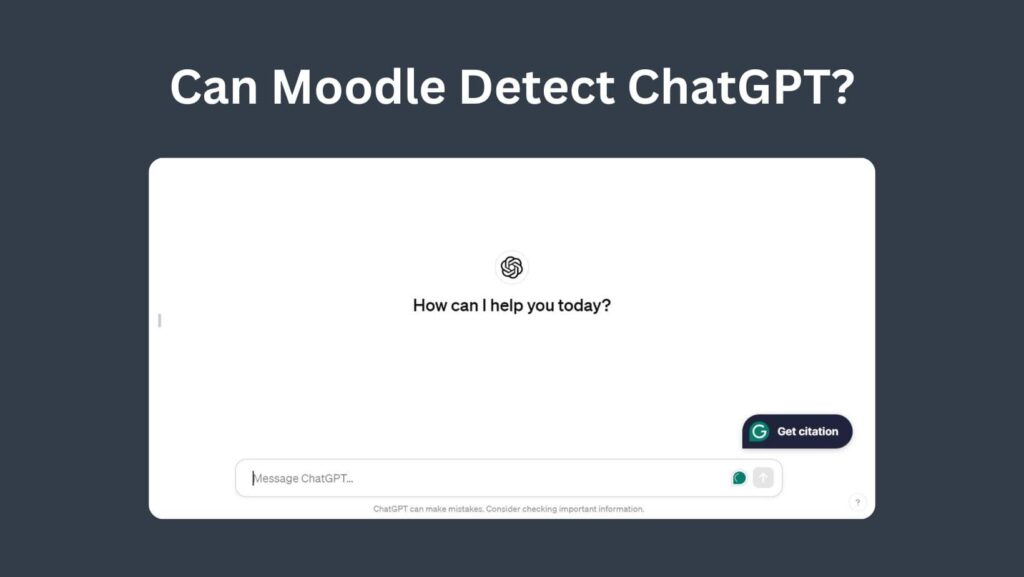
Yex, Moodle can detect ChatGPT generated text.
Here’s how it works:
You, the teacher, activate Originality.ai in Moodle.
Students submit their assignments.
Originality.ai scans the submitted work against a giant database of information, including text written by AI tools like ChatGPT.
Originality.ai then gives you a report like a detective. This report shows a percentage – how much of the text matches what the scanner found online.
So, if a student copied most of their work from ChatGPT, the report might say something like “95% AI generated.”
That high number is a red flag, because it means almost all the text matches something written by AI.
Basically, Originality.ai helps you see if a student used an AI shortcut instead of doing their own work. Pretty cool, right?
Can Moodle Detect ChatGPT If You Paraphrase?
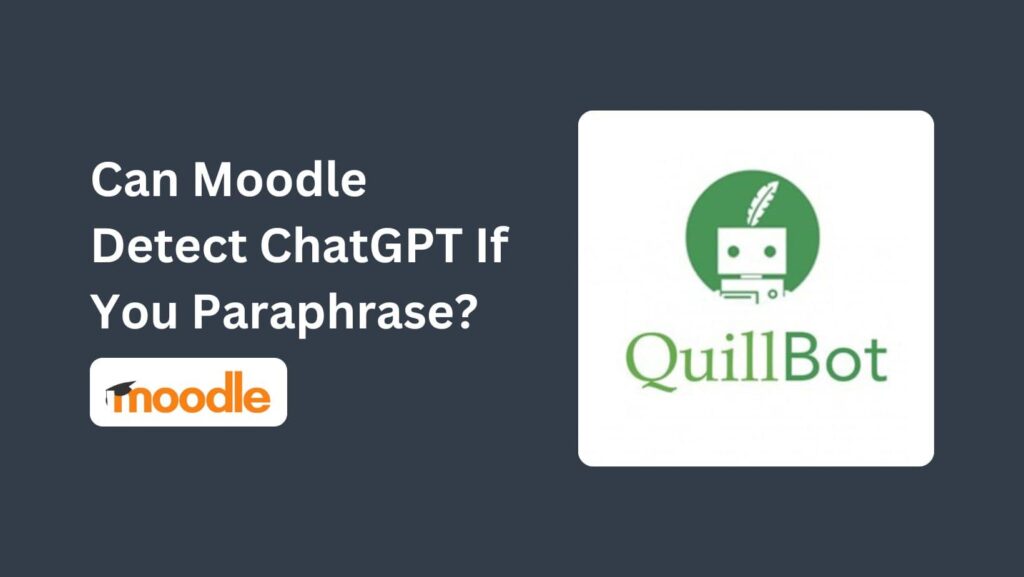
Okay, so we’ve established that Moodle can team up with plugins like Originality.ai to catch students who copy directly from AI tools like ChatGPT.
But what about those crafty folks who try to outsmart the system by paraphrasing the AI-generated text?
Paraphrasing is basically taking someone else’s words and rewriting them in your own way.
When we talk about paraphrasing AI text we are basically talking about humanizing AI text.
It’s a powerful skill that can help you understand information better and express it differently.
Here’s the thing: paraphrasing AI-generated content can make it trickier for Originality.ai to detect.
Imagine Originality.ai as a bloodhound trained to sniff out specific scents (AI-written text).
If you simply rephrase the words a bit, it might throw the bloodhound off the trail for a while.
Tools like Quillbot can also help with paraphrasing, suggesting different ways to say same things.
But here’s the catch: Originality.ai is constantly learning and getting smarter.
It’s also good at picking up on patterns, even if the words are changed a bit.
So, while paraphrasing might buy you some time, it’s not a foolproof way to bypass detection completely.
The best approach? Focus on understanding the material and developing your own ideas.
That way, you won’t need to rely on AI or fancy tricks to succeed in your online courses.
After all, learning is about growing your knowledge, not finding shortcuts!
Is Using AI Bad In Education?
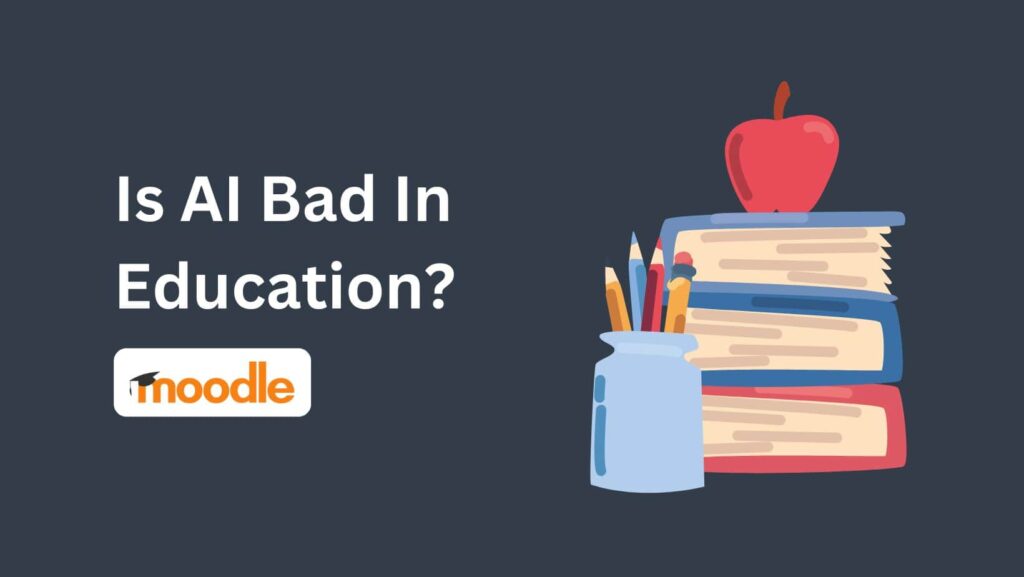
AI in the classroom – is it friend or foe?
Let’s face it, it’s 2024, and AI is woven into so many aspects of our lives.
It’s not going anywhere! So, the question isn’t really whether AI exists, but how we can use it for good in education.
Imagine AI as a super-powered tutor, ready to help students learn in new and exciting ways.
AI tools can personalize learning experiences, catering to each student’s strengths and weaknesses.
They can also offer immediate feedback on assignments, helping students understand where they might need improvement.
But here’s the flip side: using AI to cheat is a big no-no.
Think about it like using a fancy calculator on a basic math test – it might get you the answer, but it doesn’t help you actually learn the process.
The same goes for AI-written essays.
They might sound fancy, but if you don’t understand the material yourself, you’re not developing critical thinking skills.
That’s the true value of education, and AI can’t replace that.
So, the key takeaway is this: AI can be a powerful tool to support learning, but it shouldn’t be a shortcut to avoid the hard work.
When used responsibly, AI can actually make learning more engaging and effective for everyone.
Maintaining Integrity In Online Education.

Maintaining integrity in online education requires a collaborative effort.
Teachers and students working together to create a fair and honest environment.
Sure, tools like Moodle with fancy plugins can help catch students who might be trying to sneak by with AI-written work.
But those tools are just the starting point.
The real key is building a classroom culture where everyone values honest learning.
Teachers can do this by creating assignments that make students think critically and analyze information, not just copy and paste.
Open communication is also important – letting students know what’s expected and why.
And finally, teachers can explore different ways to assess learning, going beyond just written tests.
The bottom line? When teachers use technology wisely and students focus on genuine learning, online classrooms become places where everyone thrives and plays by the rules.
That’s how we create a successful online learning experience, together!
Conclusion
So, the big question: Can Moodle Detect ChatGPT?
The answer is yes, but with a twist. Moodle itself can’t directly sniff out AI-generated content.
However, it can team up with special plugins like Originality.ai to become a superhero against plagiarism.
These plugins act like super scanners, checking student work against massive databases, including text written by AI tools.
While paraphrasing might temporarily slow them down, AI detection is constantly evolving.
FAQs
Q1. Can Moodle detect ChatGPT written content?
Nope! Moodle on its own doesn’t have built-in superpowers to sniff out AI text. Think of it as a classroom with desks and whiteboards – great for learning, but it lacks a special AI detector.
Q2. So how can Moodle catch AI cheating?
Moodle can team up with special plugins like Originality.ai, which acts like a super scanner for your online classroom. This plugin checks student work against a giant database, including text written by AI tools like ChatGPT.
Q3. Can I bypass detection by paraphrasing the AI text?
Paraphrasing might slow down AI detection tools for a bit, but they’re constantly getting smarter and picking up on patterns. The best approach? Focus on understanding the material and developing your own ideas.
Q4. Is using AI bad in education?
AI can be a powerful tool to support learning, like a super-powered tutor offering personalized experiences and immediate feedback. However, using AI to cheat by submitting AI-written work avoids the hard work and doesn’t help develop critical thinking skills.
Q5. How can we maintain integrity in online education?
It’s a team effort! Educators can use Moodle and plugins responsibly, while also designing assignments that promote critical thinking and open communication. Students should focus on genuine learning, and together we can create a thriving online learning environment.

